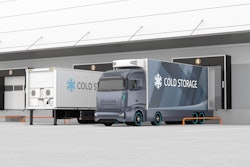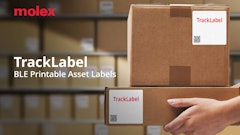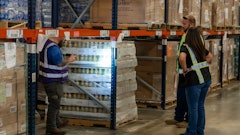
Supply chains have come a long way since pandemic-era disruptions changed everything, making a typically niche industry a staple of dinner-table conversations. The long lines at ports and clogged canals have subsided, but that doesn’t mean everything is perfect.
The White House recently established a Council on Supply Chain Resilience to ensure supply chains are heading in the right direction. When done right, supply chains can be vital to lowering inflation. According to the Federal Bank of New York, global supply chain pressures have hit their lowest point in decades.
So, how do we keep the progress going?
The food supply chain has plenty to consider, from seasonal shifts in harvest cycles to safe and efficient warehousing to streamlined delivery. Add in the wild card of ever-changing consumer trends, and it’s clear how much volatility the industry must endure.
However, with volatility comes opportunity. An evolved blueprint for logistics, new investments in automation, better data, and a commitment to sustainability will all be keys to success as we turn the calendar to 2024. Let’s dig deeper with five predictions of what will come next year.
A resilience-first revolution
Supply chains have evolved over the years, and it was clear that resiliency will be critical to adapting in 2024 and beyond, even before the new council was established. Traditionally, logistics was about finding the lowest costs. Then, it was about cost control and service. Delivering in full, and on time, was a necessity.
Expect a new requirement for companies to withstand various challenges. So, logistics is now about costs, service, and resilience. This new revolution brings a greater focus on scalability and automation to adjust to needs at any moment.
Logistics companies face new headwinds like labor challenges and increasingly high customer demands that have made the ability to deliver on time, and at the right cost, a tight needle to thread. These complexities have led to much consolidation in the past two years, and there will likely be more struggles in 2024 before a rebound in 2025. To hurdle all the obstacles standing in the way, logistics providers need to have quick access to information and the ability to share it with other stakeholders to meet customer demands efficiently.
Automation: The future of warehouse operations
Today’s warehouses are larger than ever — CBRE data shows the majority in North America are between 200,000 and 499,999 square feet. Facilities so massive can’t be operated entirely by manual labor. There’s a first-mover advantage for companies introducing automation into their processes so humans aren’t stretched thin and can be made available for the most critical tasks.
Companies that leverage robotics and automation can make their facilities more efficient despite their large footprint. This trend is already taking effect, according to a report by Venca Robotics that shows 85% of warehouse operators plan to deploy automation within 12 months.
The rise of Scope 3 reporting
Consumer behavior has influenced a shift toward sustainability. In fact, according to one report, 78% of consumers want companies to do more to make sustainable food, yet 38% don’t trust companies to be honest about their environmental impact.
The key to increasing that transparency is more Scope 3 reporting, providing a look into the efforts within a company’s supply chain. Bloomberg says only 5% of companies report emissions from supply chains and customers.
Many people overlook warehousing in Scope 3 reporting, instead focusing on transportation processes. Warehouses can be designed sustainably, use renewable energy, or even find ways to be independent of the grid. Standing up a warehouse in an optimal location with the right capabilities can also save transport emissions. Companies must consider these strategies because regulation may be on the way after an SEC proposal in 2022 to mandate Scope 3 reporting. If more publicly traded companies select their suppliers based on sustainable operations, which their customers also want, there may be a significant societal impact.
AI’s success hinges on high-quality data
Artificial intelligence (AI) is all the rage in and outside the tech world. It’s becoming harder to define AI as new tools and complex algorithms are introduced to the market, but we know one thing will remain true: To get quality output from AI, you need to input quality data.
This is an area where logistics needs to improve. The industry is still digitizing, so we need more data to feed these AI tools. We need a better grasp of the data to know there’s trustworthy information at the core of AI tools, which promise to improve decision-making. Companies that introduce automation will be ahead in the AI race because they use large amounts of data to influence how they use the technology.
Geopolitics, remote work drive reshoring efforts
Military and trade wars create indirect turmoil in North America, reshaping how companies act. These factors are fluid and dynamic, leaving companies without control, but they can regain some by reshoring and operating their supply chains in areas closer to home.
Many companies have already made considerable investments to localize their logistics. This is inherently the case for many food supply chains, where operations are typically regional, but this mentality has also extended to other sectors.
Another factor influencing reshoring is the migration of remote workers. It began during the early days of the pandemic and has continued as remote work becomes the new normal. Improved logistics are still needed in traditionally remote locations, and when companies reshore they can have more control over their processes.
While uncertainty always exists on the horizon, the leading food supply chain companies will be thinking about how they can be best prepared to react to the unexpected in 2024. Strategic bets on resilience, automation, sustainability, data improvement, and reshoring should pay off in the future.


















